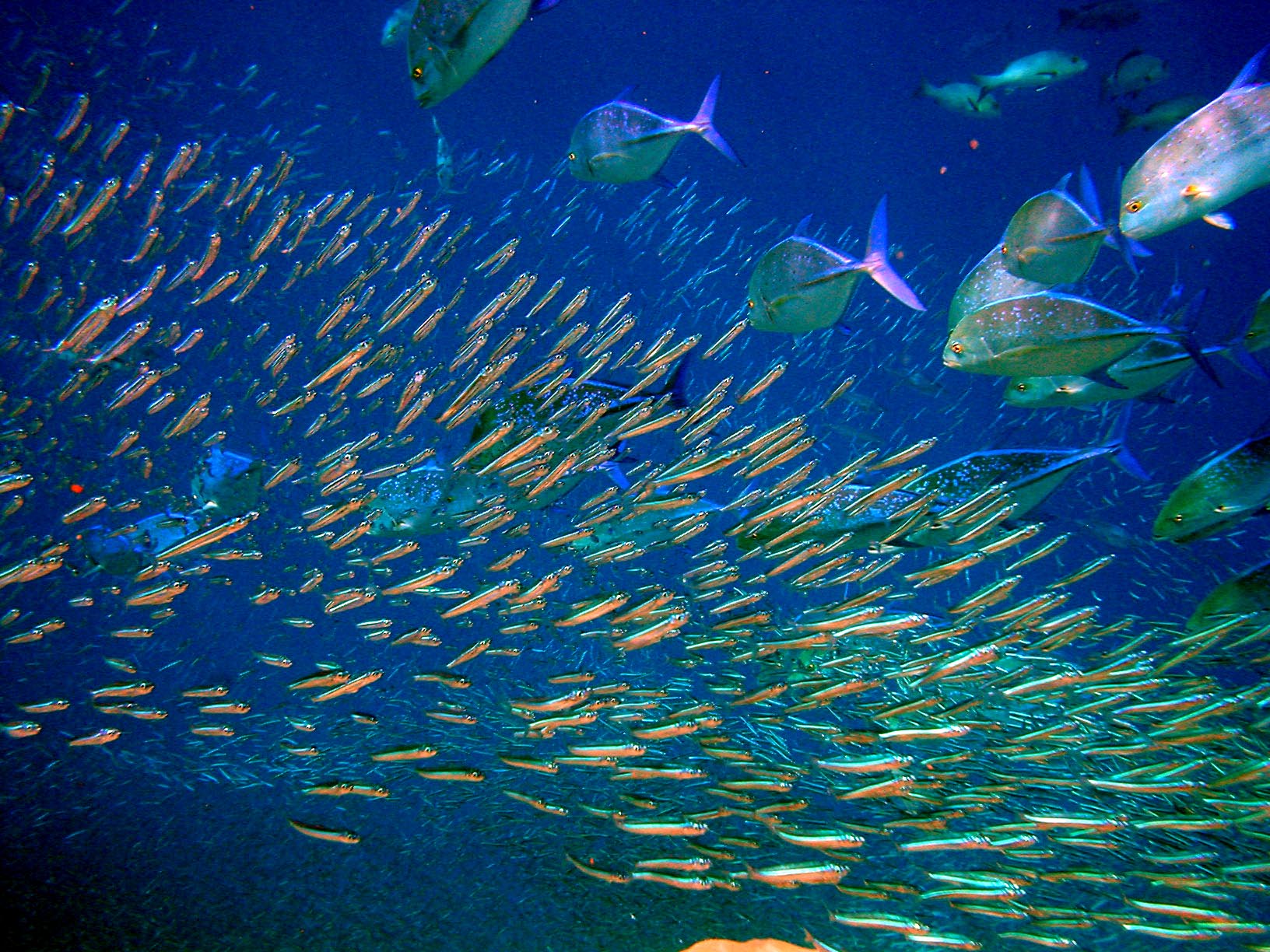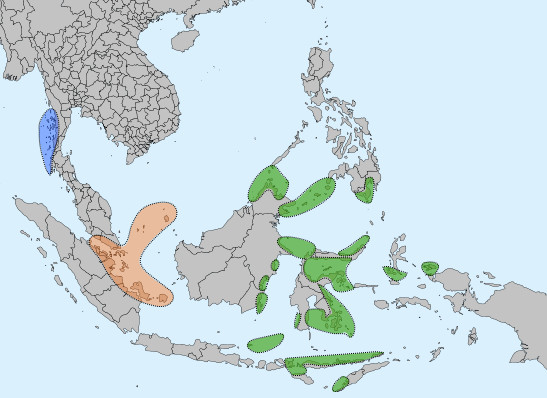|
Payaos
A payao is a traditional fish aggregating device from the Philippines. Payaos are traditionally floating rafts of bamboo anchored to the seafloor, with submerged weighted palm fronds beneath it. They were harvested using handline fishing, surface trolling, or small-scale purse seining. Modern steel payaos use fish lights and fish location sonar to increase yields. While payao fishing is sustainable on a small scale, the large scale, modern applications have been linked to adverse impacts on fish stocks. Payaos have been introduced to fishermen in Vietnam, Thailand (where it is known as ''sung''), and various countries in Oceania (including the Federated States of Micronesia, Fiji, Papua New Guinea, and the Solomon Islands). Similar devices are also used traditionally in Indonesia, Malaysia, and Timor-Leste (where they are known as '' rumpon'' or '' roempon'' in Malay), and among the Moken people of Myanmar. Traditional payaos A traditional payao is a bamboo raft anchored to ... [...More Info...] [...Related Items...] OR: [Wikipedia] [Google] [Baidu] |
Fish Aggregating Device
A fish aggregating (or aggregation) device (FAD) is a man-made object used to attract pelagic fish such as marlin, tuna and mahi-mahi (dolphin fish). They usually consist of buoys or floats tethered to the ocean floor. Various types of FADs have been employed in the traditional fishing cultures of Island Southeast Asia (especially in the Philippines), Japan, and Malta for centuries. Modern FADs are increasingly being used in modern commercial and sport fishing. Fish behaviour Fish are fascinated with floating objects, which they use to mark locations for mating activities. They aggregate around objects such as drifting flotsam, rafts, jellyfish and floating seaweed. The objects appear to provide a "visual stimulus in an optical void", and offer refuge for juvenile fish from predators. The juvenile fish, in turn attract predators. A study using sonar in French Polynesia, found large shoals of juvenile bigeye tuna and yellowfin tuna aggregated closest to the devices, at distanc ... [...More Info...] [...Related Items...] OR: [Wikipedia] [Google] [Baidu] |
Indonesia
Indonesia, officially the Republic of Indonesia, is a country in Southeast Asia and Oceania, between the Indian Ocean, Indian and Pacific Ocean, Pacific oceans. Comprising over List of islands of Indonesia, 17,000 islands, including Sumatra, Java, Sulawesi, and parts of Borneo and New Guinea, Indonesia is the world's largest archipelagic state and the List of countries and dependencies by area, 14th-largest country by area, at . With over 280 million people, Indonesia is the world's List of countries and dependencies by population, fourth-most-populous country and the most populous Islam by country, Muslim-majority country. Java, the world's List of islands by population, most populous island, is home to more than half of the country's population. Indonesia operates as a Presidential system, presidential republic with an elected People's Consultative Assembly, legislature and consists of Provinces of Indonesia, 38 provinces, nine of which have Autonomous administrative divisi ... [...More Info...] [...Related Items...] OR: [Wikipedia] [Google] [Baidu] |
Tuna
A tuna (: tunas or tuna) is a saltwater fish that belongs to the tribe Thunnini, a subgrouping of the Scombridae ( mackerel) family. The Thunnini comprise 15 species across five genera, the sizes of which vary greatly, ranging from the bullet tuna (max length: , weight: ) up to the Atlantic bluefin tuna (max length: , weight: ), which averages and is believed to live up to 50 years. Tuna, opah, and mackerel sharks are the only species of fish that can maintain a body temperature higher than that of the surrounding water. An active and agile predator, the tuna has a sleek, streamlined body, and is among the fastest-swimming pelagic fish—the yellowfin tuna, for example, is capable of speeds of up to . Greatly inflated speeds can be found in early scientific reports and are still widely reported in the popular literature. Found in warm seas, the tuna is commercially fished extensively as a food fish, and is popular as a bluewater game fish. As a result of overfishi ... [...More Info...] [...Related Items...] OR: [Wikipedia] [Google] [Baidu] |
Pelagic Fish
Pelagic fish live in the pelagic zone of ocean or lake waters—being neither close to the bottom nor near the shore—in contrast with demersal fish that live on or near the bottom, and reef fish that are associated with coral reefs. The marine pelagic environment is the largest aquatic habitat on Earth, occupying 1,370 million cubic kilometres (330 million cubic miles), and is the habitat for 11% of known fish species. The oceans have a mean depth of . About 98% of the total water volume is below , and 75% is below . Moyle and Cech, p. 585 Marine pelagic fish can be divided into coastal (inshore) fish and oceanic (offshore) fish. Coastal pelagic fish inhabit the relatively shallow and sunlit waters above the continental shelf, while oceanic pelagic fish inhabit the vast and deep waters beyond the continental shelf (even though they also may swim inshore). Pelagic fish range in size from small coastal forage fish, such as herrings and sardines, to large apex pred ... [...More Info...] [...Related Items...] OR: [Wikipedia] [Google] [Baidu] |
Nipa Palm
''Nypa fruticans'', commonly known as the nipa palm (or simply nipa, from ) or mangrove palm, is a species of palm native to the coastlines and estuarine habitats of the Indian and Pacific Oceans. It is the only palm considered adapted to the mangrove biome. The genus ''Nypa'' and the subfamily Nypoideae are monotypic taxa because this species is their only member. Description Unlike most palms, the nipa palm's trunk grows beneath the ground; only the leaves and flower stalk grow upwards above the surface. The leaves extend up to in height. The flowers are a globular inflorescence of female flowers at the tip with catkin-like red or yellow male flowers on the lower branches. The flower produces woody nuts arranged in a globular cluster up to across on a single stalk. The infructescence can weigh as much as sixty-six pounds (thirty kg). The fruit is globular made of many seed segments, each seed has a fibrous husk covering the endosperm that allows it to float. The stal ... [...More Info...] [...Related Items...] OR: [Wikipedia] [Google] [Baidu] |
Coconut
The coconut tree (''Cocos nucifera'') is a member of the palm tree family (biology), family (Arecaceae) and the only living species of the genus ''Cocos''. The term "coconut" (or the archaic "cocoanut") can refer to the whole coconut palm, the seed, or the fruit, which botanically is a drupe, not a Nut (fruit), nut. Originally native to Central Indo-Pacific, they are now ubiquitous in coastal tropical regions and are a cultural icon of the tropics. The coconut tree provides food, fuel, cosmetics, folk medicine and building materials, among many other uses. The inner flesh of the mature seed, as well as the coconut milk extracted from it, forms a regular part of the diets of many people in the tropics and subtropics. Coconuts are distinct from other fruits because their endosperm contains a large quantity of an almost clear liquid, called "coconut water" or "coconut juice". Mature, ripe coconuts can be used as edible seeds, or processed for Coconut oil, oil and Coconut milk, ... [...More Info...] [...Related Items...] OR: [Wikipedia] [Google] [Baidu] |
Arecaceae
The Arecaceae () is a family (biology), family of perennial plant, perennial, flowering plants in the Monocotyledon, monocot order Arecales. Their growth form can be climbing palm, climbers, shrubs, tree-like and stemless plants, all commonly known as palms. Those having a tree-like form are colloquially called palm trees. Currently, 181 Genus, genera with around 2,600 species are known, most of which are restricted to tropics, tropical and subtropics, subtropical climates. Most palms are distinguished by their large, compound, evergreen leaves, known as fronds, arranged at the top of an unbranched stem, except for the Hyphaene genus, who has branched palms. However, palms exhibit an enormous diversity in physical characteristics and inhabit nearly every type of Habitat (ecology), habitat within their range, from rainforests to deserts. Palms are among the best known and most extensively Horticulture, cultivated plant families. They have been important to humans throughout much ... [...More Info...] [...Related Items...] OR: [Wikipedia] [Google] [Baidu] |
Bamboo
Bamboos are a diverse group of mostly evergreen perennial plant, perennial flowering plants making up the subfamily (biology), subfamily Bambusoideae of the grass family Poaceae. Giant bamboos are the largest members of the grass family, in the case of ''Dendrocalamus sinicus'' having individual stalks (Culm (botany), culms) reaching a length of , up to in thickness and a weight of up to . The internodes of bamboos can also be of great length. ''Kinabaluchloa, Kinabaluchloa wrayi'' has internodes up to in length. and ''Arthrostylidium schomburgkii'' has internodes up to in length, exceeded in length only by Cyperus papyrus, papyrus. By contrast, the stalks of the tiny bamboo Raddiella, ''Raddiella vanessiae'' of the savannas of French Guiana measure only in length by about in width. The origin of the word "bamboo" is uncertain, but it most likely comes from the Dutch language, Dutch or Portuguese language, Portuguese language, which originally borrowed it from Malay langua ... [...More Info...] [...Related Items...] OR: [Wikipedia] [Google] [Baidu] |
Myanmar
Myanmar, officially the Republic of the Union of Myanmar; and also referred to as Burma (the official English name until 1989), is a country in northwest Southeast Asia. It is the largest country by area in Mainland Southeast Asia and has a population of about 55 million. It is bordered by India and Bangladesh to its northwest, China to its northeast, Laos and Thailand to its east and southeast, and the Andaman Sea and the Bay of Bengal to its south and southwest. The country's capital city is Naypyidaw, and its largest city is Yangon (formerly Rangoon). Early civilisations in the area included the Tibeto-Burman-speaking Pyu city-states in Upper Myanmar and the Mon kingdoms in Lower Myanmar. In the 9th century, the Bamar people entered the upper Irrawaddy River, Irrawaddy valley, and following the establishment of the Pagan Kingdom in the 1050s, the Burmese language and Culture of Myanmar, culture and Buddhism in Myanmar, Theravada Buddhism slowly became dominant in the co ... [...More Info...] [...Related Items...] OR: [Wikipedia] [Google] [Baidu] |
Moken People
The Moken (also Mawken or Morgan; ; ) are an Austronesian people of the Mergui Archipelago, a group of approximately 800 islands claimed by both Myanmar and Thailand, and the Surin Islands. Most of the Moken live a semi-nomadic hunter-gatherer lifestyle heavily based on the sea, though this lifestyle is increasingly under threat. The Moken identify in a common culture and some speak the Moken language, a distinct Austronesian language. Attempts by both Myanmar and Thailand to assimilate the Moken into the wider regional culture have met with very limited success. However, the Moken face an uncertain future as their population decreases and their nomadic lifestyle and unsettled legal status leave them marginalized by modern property and immigration laws, maritime conservation and development programs, and tightening border policies. Nomenclature The people refer to themselves as Moken. The name is used for all of the Austronesian speaking tribes who inhabit the coast and isl ... [...More Info...] [...Related Items...] OR: [Wikipedia] [Google] [Baidu] |






